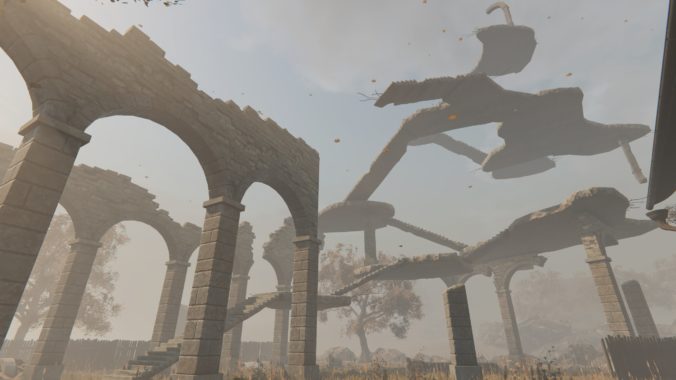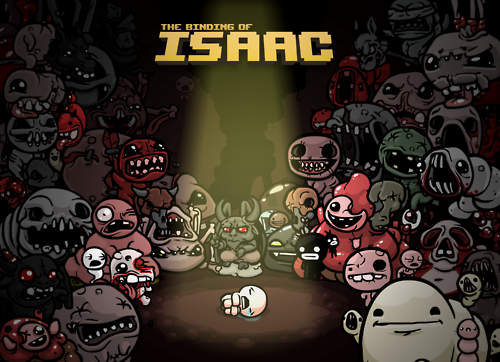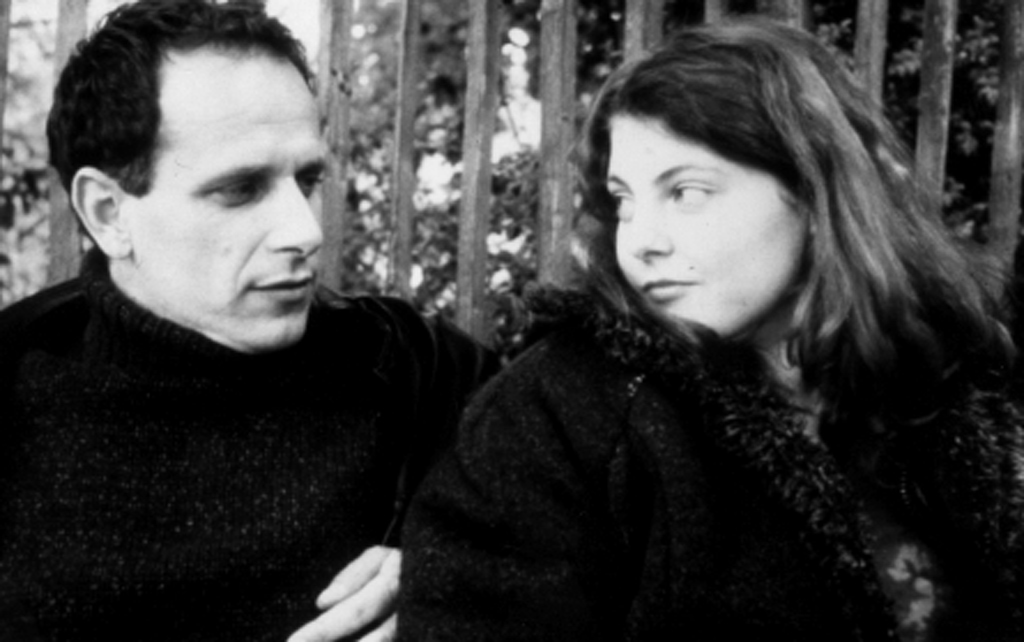Measure for Measure is a sick and disturbing play. Every change Shakespeare made to the source material, including the shift from tragedy to comedy, made it even more twisted. It’s never a good idea to speculate on Shakespeare’s motives, but this sickly comedy leaves religion, politics, and theater all looking terrible.
The quick summary of the relevant plot points: the Duke thinks he has been too lenient in governing Vienna (nice choice of setting!), so he turns his power over to the hypocritical puritan Angelo, who promptly sentences Claudio to death for getting his fiancee pregnant. Claudio’s chaste sister Isabella, a nun, pleads for clemency, and Angelo says he’ll spare Claudio, but only if she sleeps with him. So she does, but Angelo executes Claudio anyway, because he’s worried that Claudio will kill him if he ever finds out.
But no! The Duke has been in disguise as a friar the whole time and arranged it so that Angelo’s ex-fiancee, whom he dumped when her dowry sank at sea, pretended to be Isabella in bed. The Duke also manages to prevent Claudio’s execution by conveniently substituting a prisoner who just died of illness the same day. The Duke reveals himself and lets everyone off, including pardoning an amoral murderer who’s been sitting on the fringes of the action (and whom the Duke was initially going to substitute for Claudio before the other prisoner happened to drop dead). Then the Duke proposes to Isabella and the play ends before she can answer.
To the basic tale, Shakespeare added the bits after “But no!”, borrowing from a few other plots, in order to turn the grim morality play into a comedy. You can go on for ages looking at the various mirrored situations and the oozing moral and physical viscera all over the place, but I want to focus on the biggest problem of all, the Duke, and particularly his rhetoric.
Any interpretation of Measure for Measure that does not turn on an indictment of the Duke renders the play morally indefensible. He carelessly then carefully manipulates and tortures the characters as much as a Coen Brothers villain, and were the tone different, it would play as A Serious Man or a Kleist tale.
This has been a longstanding view. Coleridge was nauseated by the whole play, and I’m genuinely scared by those who see the Duke as some sort of moral paragon. E.K. Chambers (1906) gives a standard indictment:
The duke can be nothing but a travesty of a Haroun-al-raschid. Why does he conceal from Isabella, in her grief, the knowledge that her brother yet lives? To what purpose is the further prolongation of her agony, after his return, by the pretended disbelief of her story and the suspicion cast upon the friar, in whose person he has counselled her?
These are the antics of a cat with a mouse, rather than the dispositions of a wise and beneficent ruler; and it is difficult to see anything in the grave elaboration of them, except a satirical intention of Shakespeare towards theories about the moral government of the universe which, for the time being at least, he does not share. As yet, indeed, his nascent pessimism has only advanced to the point of finding ineffectiveness and not deliberate ill-will in the ordering of things. The thorough-going denunciations of King Lear are still to come.
E.K. Chambers
Now, there is room for some complication here. The Duke himself has some bizarre quirks, as well as the evident split personality.First he abdicates power, then he abdicates knowledge, as though the combination of the two is too great a burden for him to bear. And obviously it is.
But I want to pay attention to his rhetoric. No one else in the play speaks like him. Every time he opens his mouth, the play goes into another register, whether he’s in verse or prose. His speech is just as labyrinthine as his theatrical machinations. He speaks in some of the twistiest rhetoric of anyone this side of Love’s Labours Lost. Even his moralizing is knotted up:
That we were all, as some would seem to be,
From our faults, as faults from seeming, free!
III.ii
Did you get that? “If only both (a) we were as little subject to our faults, and (b) faults were as free of being in disguise–as much as some people seem to be free from faults.” It’s a bizarre and unbalanced construction that uses the two similes in unorthodox fashion, especially since at its heart is an incoherence: Faults should be as free of disguise as much as faults are in disguise.
This is par for the course for the Duke. His opening discourse on governing is little better, to the extent that scholars from Samuel Johnson on have wondered if miscopying had marred the meaning.
Of government the properties to unfold
Would seem in me t’affect speech and discourse,
Since I am put to know that your own science
Exceeds, in that, the lists of all advice
My strength can give you. Then no more remains
But that, to your sufficiency, as your worth is able,
And let them work.
I.i
I could believe in the textual corruption if the obfuscatory rhetoric didn’t fit so nicely with the Duke’s personality. Throughout the whole play, the Duke’s rhetoric tends to fall on empty ears anyway. He can be as cryptic as he wants, because (a) he is pulling the strings, and (b) no one really cares what he says. People want things from him; they have no relationship with him.
When the Duke visits the condemned Claudio in prison, his “comfort” to Claudio is like Hamlet’s soliloquy as delivered by Polonius, encouraging Claudio to accept death as a release from the pain of life, even as he plots to free Claudio from the freedom from life of death.
Reason thus with life:
If I do lose thee, I do lose a thing
That none but fools would keep….
If thou art rich, thou’rt poor;
For, like an ass whose back with ingots bows,
Thou bear’s thy heavy riches but a journey,
And death unloads thee. Friend hast thou none;
For thine own bowels, which do call thee sire,
The mere effusion of thy proper loins,
Do curse the gout, serpigo, and the rheum,
For ending thee no sooner.
III.i
The Duke’s “comfort” works on Claudio…for about a minute. As soon as Isabella shows up to tell her of Angelo’s bargain, Claudio jumps at the chance for life and tosses the Duke’s stoicism into the rubbish bin:
CLAUDIO: To die and go we know not where;
To lie in cold obstruction and to rot;
This sensible and warm motion to become
A kneaded clod; . . . ’tis too horrible!
The weariest and most loathed worldly life
That age, ache, penury and imprisonment
Can lay on nature is a paradise
To what we fear of death. . . .
III.i
The Duke’s high-falutin’ rhetoric is not only pointlessly obfuscatory, but no one is listening. Whether the former caused the latter or vice versa is a question for later.
For right now I’ll just maintain that the Duke’s bloviation is intimately tied up with his peculiar sense of morality. Indeed, he frequently sounds like a cross between Polonius and King Lear‘s Edgar. The Edgar connection, which must have been made before but which I haven’t seen, is most blatant in his deception of Isabella. He tells the audience:
But I will keep her ignorant of her good,
To make her heavenly comforts of despair,
When it is least expected.
IV.iii
These lines could come straight from Edgar at Dover Cliff in King Lear, just as he tricks Gloucester into thinking he’s been saved by God from his attempted suicide. But there Edgar attributes the miracle to God’s presence. Here the heavenly comforts are those of the Duke himself.
And so it’s at least understandable that some would try to allegorize the troublesome plot. One of the more popular ways to justify the Duke has been to turn the whole thing into a Christian allegory. This was G. Wilson Knight‘s approach, and it’s ironic that after pointing out Hamlet’s moral perfidiousness, Knight would then go on to construct an elaborate mechanism to excuse equally bad actions performed by a character in with much greater power and far less excuse. G. Wilson Knight: right on Hamlet, wrong on the Duke.
But these arguments are great precisely because they mirror Christian theodicy. The play is not an allegory, but it is a nasty analogue of the sort of behavior you see in God in the Old Testament.
William Empson does condemn the Duke, as you’d expect, but even though he loathed Christianity with uncommon passion, Empson doesn’t press the point that the game-playing Duke does rather resemble the Judeo-Christian God at his wackiest, with Job, with Isaac and Abraham, with Jephthah and his daughter, etc.
While the seemingly endless cycle of Judges mirrors the “No one has learned anything” ending of Measure for Measure, the Book of Job seems most present. The cruel deceptions, the implicit, staged “bet” with the devil Angelo, blithely pardoning an amoral murderer (who uncannily anticipates Moosbrugger in Robert Musil’s The Man Without Qualities) while berating someone who had the audacity to insult you, the staged, last-minute interventions: the Duke’s mood swings and arbitrariness are quite Yahwehish. It’s not exact and it’s not an allegory, but the similarity is unmistakable.
The opaque rhetoric, then, is there to underscore the Duke’s sheer unaddressability and his disconnection from the rest of us mortals. His rhetorical skills have turned cancerous, weaving his words into thick knots that no one can fully decipher, certainly not the other characters. His rhetoric can hypnotize, but only momentarily; excluded from human discourse, it’s only his exercise of power that affects the other characters. Turning this sort of divine relationship into a secular comedy makes it into a cruel joke.
By the end of final scene, the other characters seem more tired than anything else, as the Duke rolls out his mercy. He’s God, and we’re just grateful we’re still alive by his arbitrary grace. The sophistry piles up as he justifies his actions, and certainly no one will call him on anything. (They promptly fall all over him with praise and gratitude.) The Duke claims Claudio no longer fears death and can enjoy life even more now:
And you may marvel why I obscured myself,
Labouring to save his life, and would not rather
Make rash remonstrance of my hidden power
Than let him so be lost. O most kind maid,
It was the swift celerity of his death,
Which I did think with slower foot came on,
That brain’d my purpose. But, peace be with him!
That life is better life, past fearing death,
Than that which lives to fear: make it your comfort,
So happy is your brother.
V.i
Angelo, who expresses great remorse and says he just wants to die, also gets off free and marries his ex-fiancee. (Assuming that his death wish is sincere, sparing Angelo does make for a bit of an “I Have No Mouth and I Must Scream” situation, cf. the Harlan Ellison story where all-powerful God/computer AM keeps five humans around to torture and play with after killing everyone else.)
The Duke doesn’t propose marriage to super-chaste Isabella at the end so much as dictate it (she doesn’t get to respond). Why not? He’s the Duke! He knows the value of everything and the price of nothing, which is just as bad as the reverse. Sure a murderer went free and everyone is scarred for life, but didn’t we have a good time? The Duke did!
By making the comedic resolution utterly unacceptable, Shakespeare does penance for the laughter thrown at the oh-so-funny manipulations of previous comedies. Yes, this is what happens when misunderstandings and manipulations pile up: queasy horror.
There’s a lot more that could be said and countless further complications. But the Duke is the heart of it all.



























![themarriage[1]](http://www.waggish.org/wp-content/uploads/2011/08/themarriage1.gif)


![guinea_large[1]](http://www.waggish.org/wp-content/uploads/2003/04/guinea_large1.jpg)